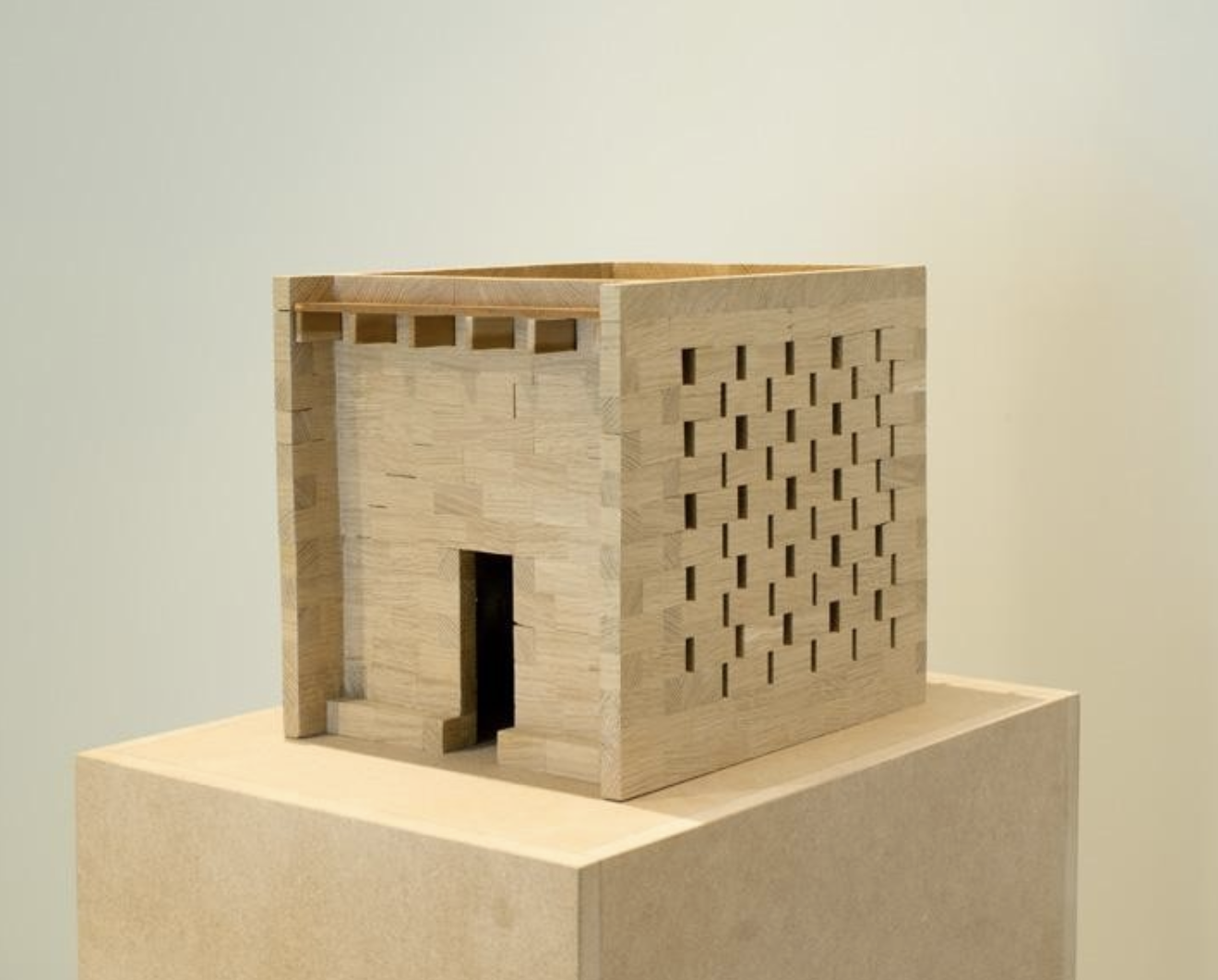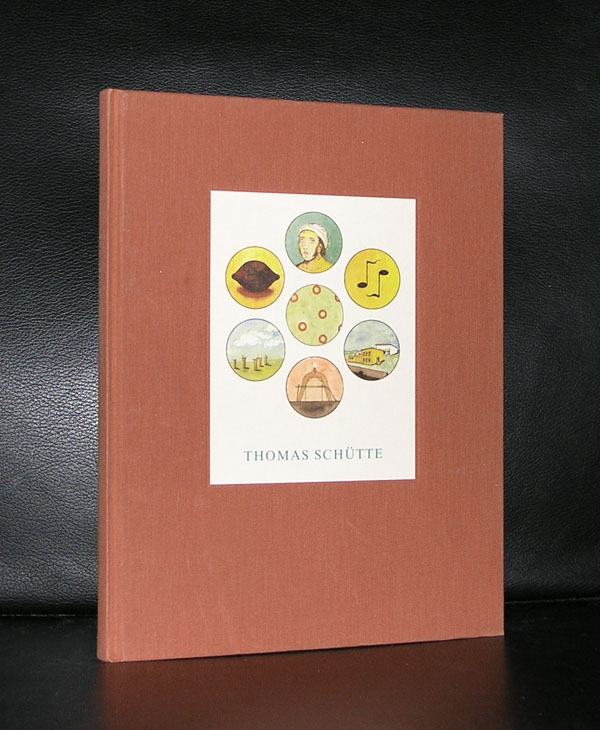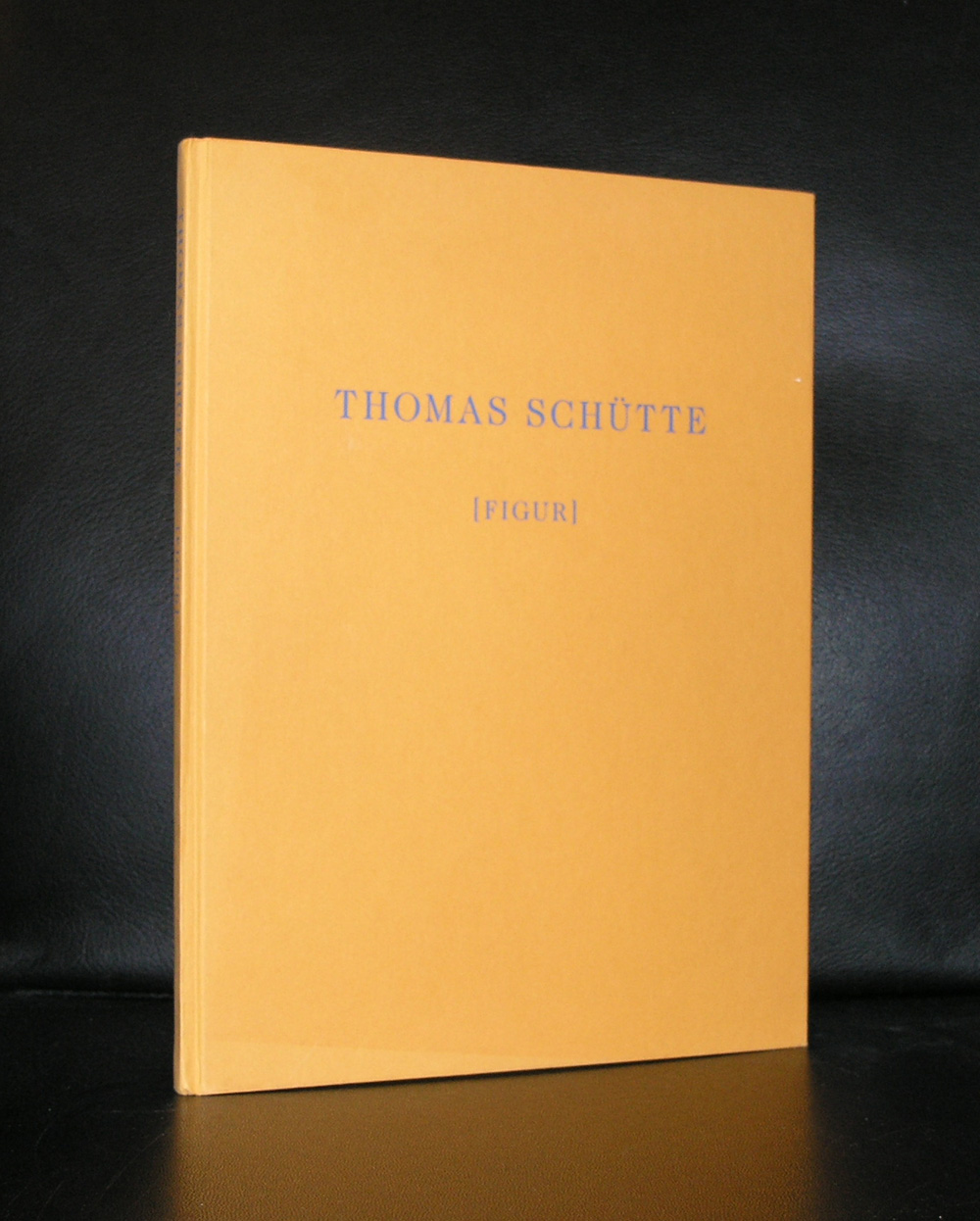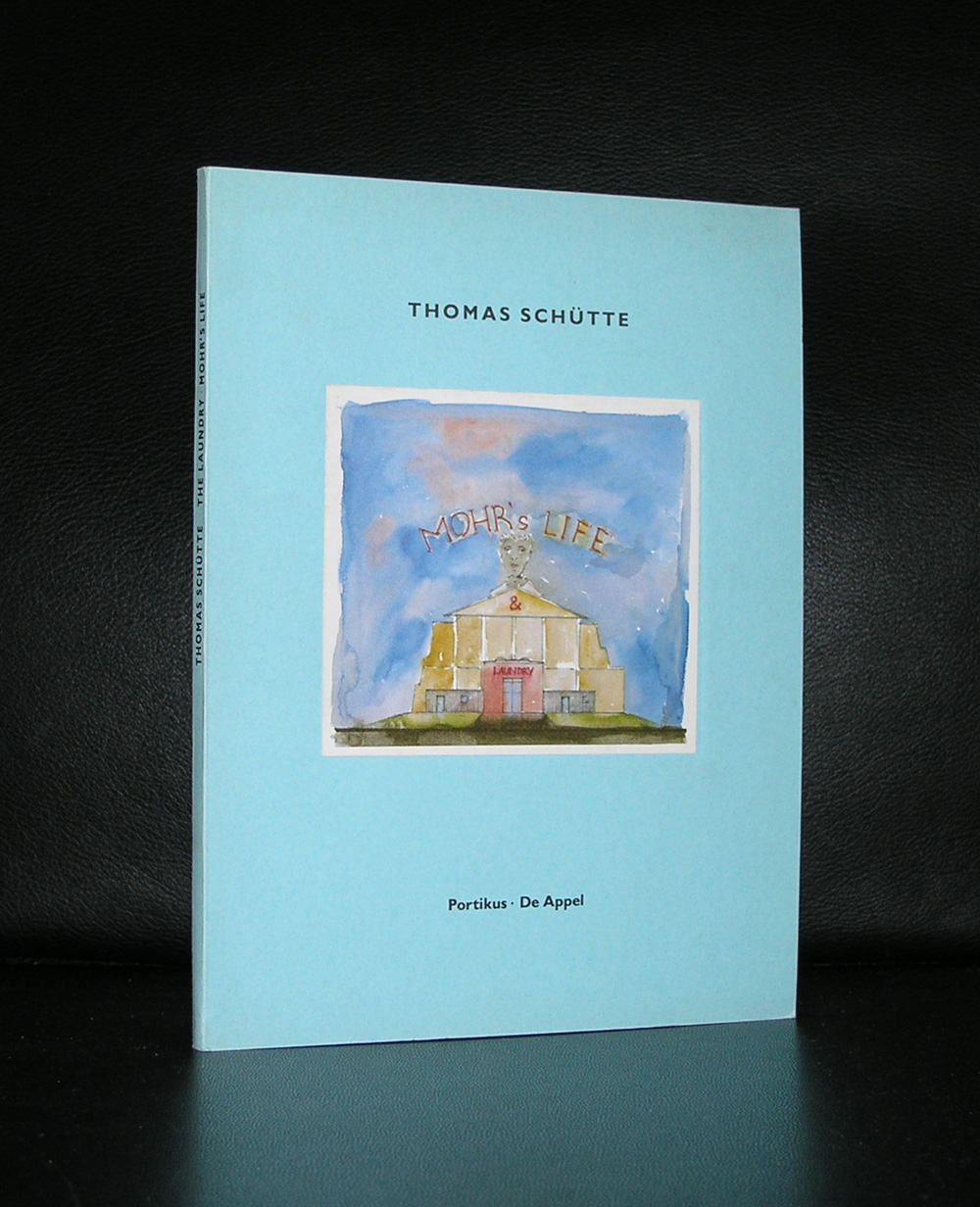
In addition to sculptures and installations, Thomas Schütte’s oeuvre also encompasses watercolors, models, paintings, and etchings. Schütte has been part of the new generation of German sculptors since the 1980s, distancing himself from minimal art and conceptual art. Along with artists such as Reinhardt Mucha, Hubert Kiecol, and Harald Klingelhöller, he developed a postmodern practice that combines references to art and architectural history with a strong dose of reevaluation of the modernist ideal in sculpture.
Schütte’s interest in art sparked when he visited Documenta V at the age of 18. He studied with Gerhard Richter in Düsseldorf, where he created his first paintings based on photos. Later on, he adopted a “decorative painting style in the spirit of Niele Toroni and Daniel Buren.” In this context, we can see Schütte’s “Garlands” and “Collections” from the late 1970s and early 1980s as brightly colored, abstract motifs acting as minimal pseudo decorations on the wall. The works reflect a strong sense of eclecticism and a non-linear way of thinking and acting, seeds of his later work.
Starting in the early 1980s, Schütte explores a more functional approach in his “Architectural Models.” The models of fictional architectural constructions criticize the “intellectual poverty of much postmodern architecture.” Since the mid-1980s, Schütte has often created watercolors. Although the human figure is often central in them, they vary greatly in style and often have an ironic undertone. Schütte sees them as sketches for his other projects, yet he still stamps and dates them, giving them the status of an archive or collection.
Schütte’s fascination with the human figure is evident in his sculptures, which he utilizes to delve into the depths of human psychology and behavioral patterns. In the late 1980s, his sculptural work evolved to a larger, grander scale. From then on, Schütte’s human figures became so distorted that they strayed far from the traditional concept of figurative sculpture. They depicted various stages of emotional and/or physical depression.
In the 1990s, Schütte continued his exploration of socio-psychological behaviors in humans, expanding his sculptural work in terms of materials, techniques, and forms. Overall, much of Schütte’s work reflects the human psychology of his time – from the nihilistic 1980s to the highly individualized 1990s and beyond – always with a hint of irony or even absurdity.
www.ftn-books.com has some of the most important Schutte publications available.































































